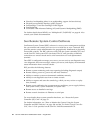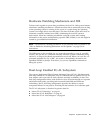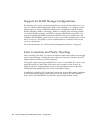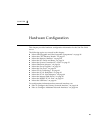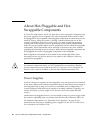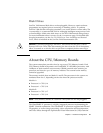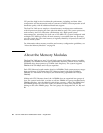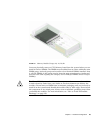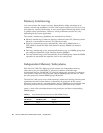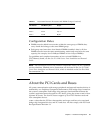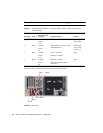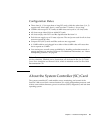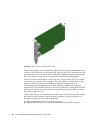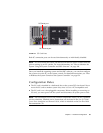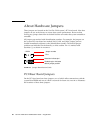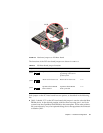
30 Sun Fire V490 Server Administration Guide • August 2004
Memory Interleaving
You can maximize the system’s memory bandwidth by taking advantage of its
memory interleaving capabilities. Sun Fire V490 systems support two-way, four-way,
and eight-way memory interleaving. In most cases, higher interleaving factors result
in greater system performance. However, actual performance results may vary
depending on the system application.
The system’s interleaving capabilities are summarized as follows:
■ Memory interleaving is limited to memory within the same CPU/Memory board.
Memory is not interleaved across CPU/Memory boards.
■ Eight-way interleaving occurs automatically when all 16 DIMM slots in a
CPU/Memory board are filled with identical capacity DIMMs (16 identical
DIMMs).
■ Four-way interleaving occurs automatically between any two DIMM groups that
are configured identically (eight identical capacity DIMMs).
■ Two-way interleaving occurs automatically in any DIMM group where the DIMM
capacities do not match the capacities used in any other group.
Independent Memory Subsystems
Each Sun Fire V490 CPU/Memory board contains two independent memory
subsystems (one per UltraSPARC IV processor). Memory controller logic
incorporated into the UltraSPARC IV processor allows each processor to control its
own memory subsystem. One processor controls DIMM groups A0 and A1, while
the other processor controls DIMM groups B0 and B1.
The Sun Fire V490 system uses a shared memory architecture. During normal system
operations, the total system memory is shared by all processors in the system.
However, in the event of a processor failure, the two DIMM groups associated with
the failed processor become unavailable to the other processors in the system.
TABLE 3-1 shows the association between the processors and their corresponding
DIMM groups.
TABLE 3-1 Association Between Processors and DIMM Groups
CPU Number CPU/Memory Slot
Associated Local DIMM
Groups
CPU 0 Slot A A0, A1



